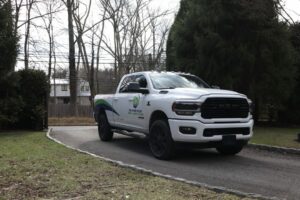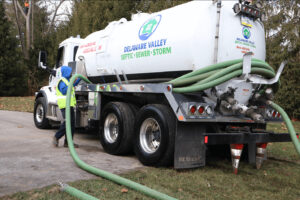When it comes time to break ground on your new property and your home does not have access to a municipal sewer system, you’ll need to handle the waste yourself, normally in the form of a septic system.
Homeowners need to consider various factors when they install a new septic system. Figuring out the best one that will work with your property isn’t as easy looking in a catalog and picking one that sounds the best. There are multiple factors that you need to consider before you begin breaking ground on your new septic system. Think you know what these factors are? Take our quiz to find out:
As the leading provider of septic replacement in Newton Square, Delaware Valley Septic, Sewer & Storm knows everything that needs to be considered when evaluating the factors that will affect your new septic system. Ultimately, you have to consider more than just the size of your tank: both soil and the force of gravity come into play as well. Before you sell yourself on your new septic system, consider these aspects about your land to make sure you are making the right decision.
Soil Texture
If your soil is thick and heavy, it might mean that you have too much clay in your soil. While this ordinarily wouldn’t seem like a big deal, it does make the area less porous, which can become an issue when exposed to a giant seepage area. While too much clay is an issue, there needs to be enough of it, as well as sand and silt, to make sure it can absorb the water usage from the home.
Sand vs. Clay
The overall composition of your soil will determine whether it will pass a state-mandated perc test or not. But which kind of soil composition lends itself best to working with a septic system? Generally, soils that feature a mix of sand, gravel, and other permeable material promote higher water absorption rates than other soil types. However, if your soil is composed mostly from clay, then you might have more of an issue. High concentrations of clay in soils can lead to a more sticky and dense composition, leading to water not being absorbed as quickly.
Check the Drainage Capabilities of Your Soil
As mentioned earlier, water needs to drain once it leaves your septic tank, so having soil that drains and percolates is a must. If you are noticing build-ups of water in your backyard and frequent puddles forming after rainstorms, that is an easy warning sign that your soil isn’t going to be cooperative with a new septic system.
There are many reasons why your soil isn’t draining properly that can negatively affect a perc test. Time of year, previous weather conditions, and temperature can cause changes in the soil that will prevent it from passing the perc test, but on another day it would be perfectly fine. If you’re unsure of the reason your soil failed the perc test was due to an unchangeable reason, test on a dry day and see what happens to your soil when exposed to water.
Perc Testing
Perc testing determines the rate at which water drains through soil. When installing a septic system, you want soil that can handle the drainage needs your new system requires. With poor drainage, the chances of wastewater pooling to the surface and creating large puddles in your backyard increase exponentially.
It is a Pennsylvania State Law that a percolation test must be performed when looking to install a new septic system onto your property. When we perform our perc tests, we will dig holes into the soil where you would ideally be putting your new septic system and fill them with water. A flotation device is then placed in the water. How it moves will tell us how the soil absorbs water and whether the ground has the right percolation to support a new septic system.
What is the Best Soil Type for Septic Systems?
While the ideal type for septic systems is a blend of gravel and clay, other characteristics will get the job done just as easily. These include soils with sand, as well as loamy soils. Loamy soils are a combination of sand, silt, and clay, which offers a unique blend of permeability and absorption rates that lends itself well to septic tank installation. Either way, make sure you take precautions to make sure your soil will support a new septic system should you choose to explore this option.
Are you concerned that your land won’t support your new septic system? Do you require septic installation in Villanova? If so, click here to contact a member of our team today.




